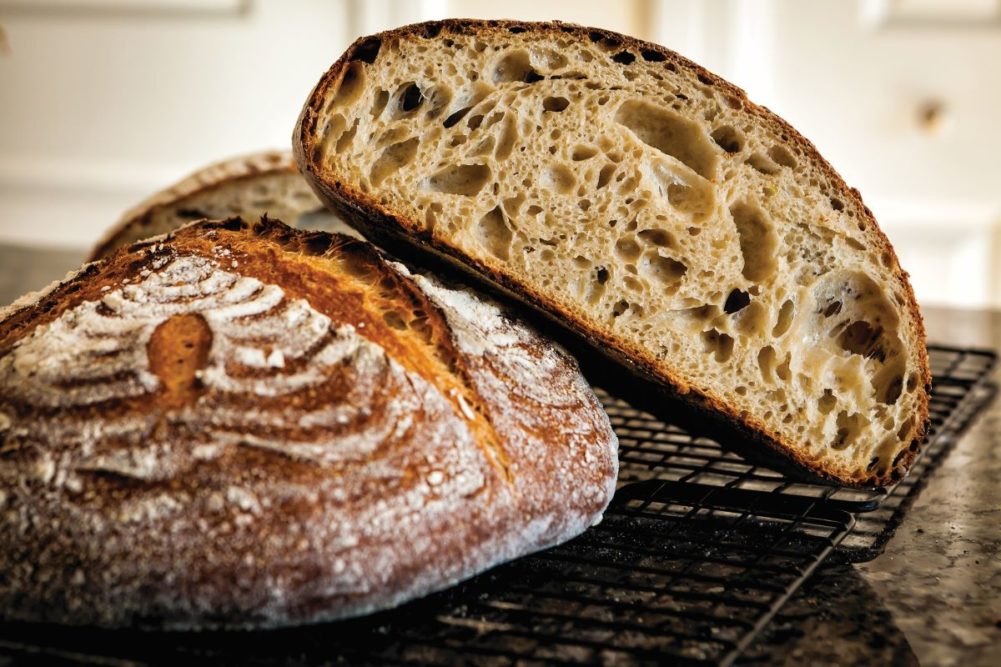KANSAS CITY — Fermentation in the bread category began thousands of years ago. The ancient Egyptians consumed sourdough bread as early as 2000 BC, said Richard Charpentier, owner and chief executive officer of Baking Innovation, Philadelphia.
Yet much still may be learned about fermentation. Specifically, new discoveries may brighten the outlook for selling artisan bread such as sourdough on the commercial level.
Promoting fermentation
In the 21st century, health and sustainability benefits may increase consumer interest in fermentation.
“Through Taste Tomorrow, our proprietary consumer research, we see that many consumers perceive fermentation as a healthy and natural way to boost the quality and nutritional value of food products,” said Michael Gleason, senior bakery product manager for Puratos USA, Pennsauken, NJ. “While it is difficult to make specific claims related to fermentation, there is a growing body of research that suggests fermentation can increase the bioavailability of certain nutrients, aid digestion and promote gut health.
“Therefore, food companies may want to highlight the use of fermentation, such as sourdough, in their products as a selling point for health-conscious consumers. In many industries, companies already use labels such as ‘fermented,’ ‘probiotic,’ or ‘live cultures’ to showcase the presence of fermented ingredients in their products.”
Fermentation plays a role in reducing waste and improving the environmental impact of food production, Mr. Charpentier said.
“For example, by using fermentation to preserve food and extend its shelf life, less food is wasted, reducing the environmental impact of food waste,” he said.
There are no regulations that prohibit mentioning fermentation on packaging or in promotions, Mr. Charpentier said.
“In fact, many brands are already using fermentation as a selling point to differentiate their products,” he said. “However, it is important to note that any claims made on packaging or in promotions must be supported by scientific evidence and cannot be misleading to consumers.
“There are several initiatives underway to increase consumer awareness about the benefits of fermentation. One approach is through online educational campaigns that promote the health benefits of fermented foods and beverages, such as their positive impact on gut health and immune function. This can include partnerships with health experts, online influencers and bloggers to create engaging content that highlights the benefits of fermentation.”
More consumers baking at home during COVID-19 had an impact, too.
“This has led to a surge in consumer interest in the benefits of sourdough fermentation, which has become more apparent during times when grocery store shelves were depleted of bread,” Mr. Charpentier said. “As a result, there has been a growing awareness among consumers about the potential health benefits of fermented foods. This increased awareness is a major factor driving the growth of the fermented food market.”
Cost-effective considerations
Several changes may be implemented to make fermentation more cost-effective in producing artisan bread, Mr. Charpentier said.
“One approach is to optimize the fermentation process by precisely controlling parameters such as time and temperature to achieve a consistent product quality,” he said. “This can be achieved through the use of advanced fermentation technology and precision fermentation and monitoring tools that can provide real-time feedback on the fermentation process.
“Another approach is to use alternative fermentation methods that can produce similar results to traditional methods but with shorter fermentation times. For example, some commercial bakeries use modified sourdough cultures that are designed to speed up the fermentation process while still maintaining the desired flavor and texture.”
He said using automated systems to measure and dispense ingredients, optimizing dough handling and shaping techniques, and minimizing the time required for fermentation and proofing all may reduce waste and increase efficiency.
“The exploration of microbial diversity is one way to improve fermentation and innovate in fermentation capacity,” said Luc Casavant, bakery applications director for Lallemand, Montreal.
Improved strains from GMO technology, metabolites diversity and fermentation conditions diversity could be explored, too, he said.
“Sourdough fermentation is a traditional baking method that has seen a resurgence of consumer interest in recent years,” Mr. Gleason said. “While it has been used for centuries, there is still room for improvement and innovation on sourdough and the flavors that can be achieved through fermentation. Technology and research in microbiology can optimize the fermentation process, resulting in more consistent flavor profiles.
“Puratos specializes in both controlling the fermentation as well as stabilizing sourdoughs to make unique, diverse flavors available to bakers all over the world. We have also seen in our Taste Tomorrow proprietary consumer research that sourdough fermentation is being applied beyond bread production to areas such as sourdough pasta, crackers and even some sweet goods.”
 A Brioche recipe can benefit from an osmotolerant yeast type.
A Brioche recipe can benefit from an osmotolerant yeast type. Source: ©ALEKSAKARINA — STOCK.ADOBE.COM
Ready-to-use sourdough starters, like the Sapore products from Puratos, may help bakers make artisan bread at commercial scale.
“Traditional sourdough production can be time-consuming, inconsistent and requires significant labor costs, making it challenging to scale production,” Mr. Gleason said. “However, ready-to-use sourdoughs can provide a range of consistent flavor profiles that are easily incorporated into direct baking processes, making it more cost-effective to produce artisan bread at a commercial scale.”
Last year Lesaffre, Marcq-en-Baroeul, France, published a book called “Fermentation” that describes the benefits of fermentation and the foods produced from fermentation.
“Fermentation is an ancestral natural mechanism used today for a wide variety of applications,” said Michael Bultel, baking business development manager, North America for Lesaffre and based in Milwaukee.
He gave bread, wine, beer, kombucha and kimchi as examples. Fermentation takes on many roles in making bread.
“Fermentation is not just the action of rising the dough,” he said. “It impacts obviously the volume of bread as well as the texture, taste and preservation when fermentation will be managed to act on pH level and organic acids generated. Lesaffre has a wide range of yeasts, sourdough and baking ingredients solutions. Using the right one for each application can bring more cost-effective bread production. For example, a brioche recipe can benefit from an osmotolerant yeast type when in a regular ciabatta it would (be more efficient) using regular yeast quality.”
Last October Lesaffre inaugurated a campus in the municipalities of Marcq-en-Baroeul and Marquette-les-Lille in France. The new buildings cover approximately 247,500 square feet with 60% of the space devoted to research and development.
“The main goals have been to reinforce R&D capabilities and agility between the teams by having all teams at the same location from lab to pilot scale,” Mr. Bultel said. “It increases the capacity to innovate and support customers for all Lesaffre business units, obviously baking customers, as well as nutrition and health division.”
The Lesaffre campus works with the Lesaffre Baking Center teams to deliver locally baking solutions and technical support to the bakers in North America, according to the company.
Other companies are investing in fermentation.
Bread Man Baking, a Houston-based artisan bakery, recently invested $3.5 million in a 40,000-square-foot facility, which included $2 million in new equipment. The company previously worked out of a 4,800-square-foot bakery.
The new facility includes three semiautomatic lines and can turn out up to 30,000 units a day compared to 5,000 units at the previous facility. The bakery offers sourdough bread, artisan batards, brioche buns, ciabatta, focaccia, Parker House dinner rolls and Pullman-style sandwich bread to restaurants.
Eurogerm, which has a US office in Hoffman Estates, Ill., has begun construction of a sourdough bio-fermentation plant in Dijon-Bourgogne Ecopac in Saint-Apollinaire, France. The €21 million ($23 million) plant, which should become operational in the first quarter of 2024, will be dedicated to the production of French sourdough. The company forecasts production of 400 tonnes of sourdough per year with capacity gradually rising to a capacity of 1,000 tonnes.
“With this bio-fermentation plant, we are taking the leap to become an ingredients producer,” said Jean-François Honoré, president of Eurogerm. “This is a strategic evolution for our own growth, and to support our customers in their innovation processes.”





